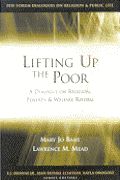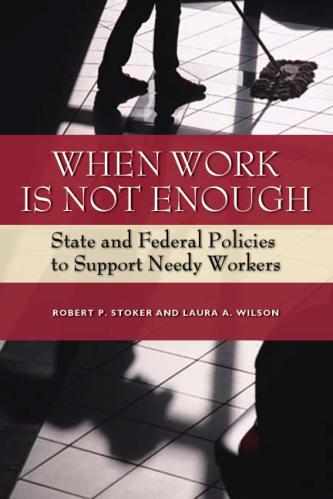This article originally appeared in U.S. News and World Report on November 13, 2017.
The federal Centers for Medicare and Medicaid Services are reportedly considering a waiver program that would allow states to experiment with work requirements for Medicaid recipients. This would surely be controversial, but should draw our attention to a larger issue: the declining percentage of Americans in the workforce.
Over the last five decades, the labor force participation rate of American males has declined by 8.5 percent. If the rate were the same today as in 1969, 5 million more men would be in the labor force. Similarly, after decades of increases, the labor force participation rate of women has stalled and even fallen for some groups, especially single mothers.
Fortunately, we already have a proven blueprint that can help reverse this troubling trend: the state waiver programs that helped usher in the 1990s welfare reform movement.
Poverty is a notable consequence of non-work. The poverty rate for prime-age, non-working households with children is 38 percent, compared to only about 7 percent for households with a full-time worker.
Low incomes and poverty are not the only consequences of non-work. Work creates a time structure and routines for daily life, has a major influence on an individual’s status and identity and creates numerous opportunities for constructing a social life. Many studies show a connection between non-work and a range of problems, including non-marriage and divorce, suicide, alcohol abuse, diseases and even a shortened lifespan. Few social problems have the array of negative consequence that non-work has.
The federal government has a long history of encouraging work by participants in welfare programs. But none of the welfare programs are very effective at increasing work rates. The exception was the welfare reform legislation enacted in 1996: Between 1995 and 2001, the cash welfare rolls fell by over 50 percent and around 80 percent of mothers worked at some point after they left welfare. During this period, the work rate of all single mothers increased by just over 13 percent, and the poverty rate of these households declined by about 20 percent.
Experts generally attribute this progress in increasing work and reducing poverty to three factors: the work requirements in welfare reform; the system of public programs that supplement the income of low-income working families with children, especially the EITC; and a hot economy.
The programs in the work support system are firmly in place and, because benefits have increased over time, provide even greater work incentives and income supplements now than in the 1990s. The economy rises and falls, but jobs are available (though harder to find) even during recessions. The economy has grown for at least parts of 40 of the last 47 years. So the main action that can increase work rates is to require work of able-bodied adults on welfare.
States are the key player in helping adults on welfare work.
States are the key player in helping adults on welfare work. States were the moving force in the 1990s when so many mothers left the cash welfare rolls to find work. But by roughly 2000, many states had lost their appetite for work requirements. And states never had high motivation to implement work requirements in the food stamp and housing programs, let alone the Medicaid program, which has never had a work requirement.
The welfare reform era provides an example of a plausible approach to how states can develop ways to help able-bodied adults on welfare enter the labor force. Starting in the mid-1980s, states used the waiver provisions in federal law to conduct experiments in helping mothers on welfare work. Eventually more than 40 states had waiver programs for promoting work. A major reason states were so successful in promoting work after passage of the 1996 welfare reform law is that most were already conducting programs that aimed to help mothers qualify for and find jobs.
To produce these results again, let’s implement a waiver program again.
Congress should re-establish what was called the “Low-Income Opportunity Board” that operated before and during the welfare reform era. States should be invited to submit proposals for implementing mandatory work requirements with their caseloads in cash welfare, food stamps, housing programs and Medicaid. States would be required to involve at least two of these programs, but would have the option of working with all four programs.
The board would be composed of the secretaries of the Departments of Health and Human Services, Labor, Housing and Urban Development and Agriculture, plus a representative from the White House, so the departments with jurisdiction over the four major welfare programs would each play a role in approving the state applications.
All programs would have to be rigorously evaluated so that states could learn whether their program increases work, increases income and has other impacts on the adults and children participating. The board would have a director appointed by the president and would have a budget of $500 million a year, which would be diverted from the budget of the cash welfare program.
There are several million able-bodied adults on cash welfare, food stamps, housing and Medicaid who do not work. Given the deleterious effects of non-work on the poverty rate, economic opportunity, the nation’s economy and individual well-being, the federal and state governments have a responsibility to lead the way in encouraging, cajoling or if necessary requiring able-bodied adults on welfare to work or lose at least part of their welfare benefit.









Commentary
Op-edMore work, more self-sufficiency
Implement state waiver programs like those of the welfare reform era to get more Americans in the workforce.
November 14, 2017